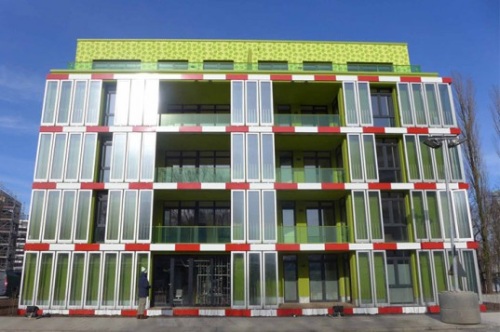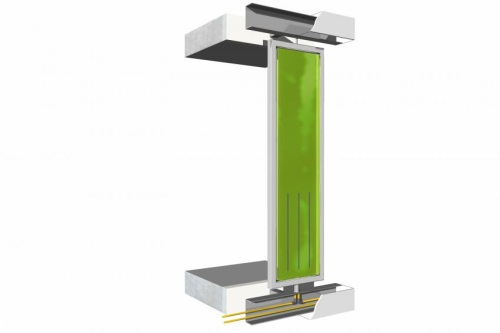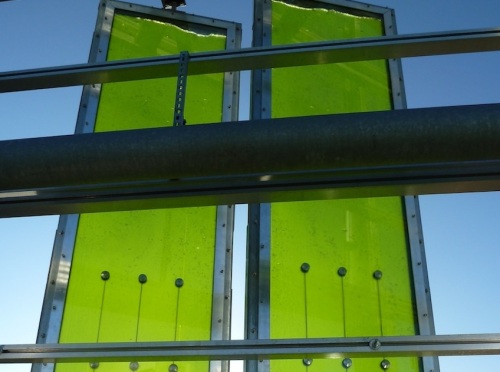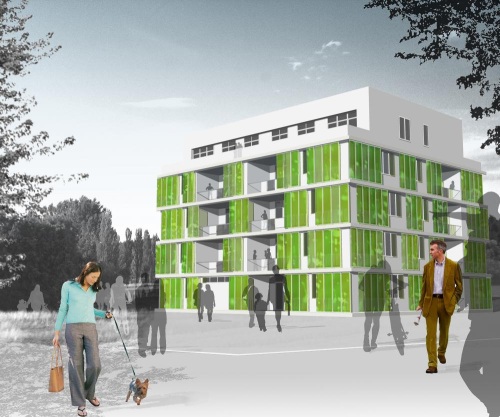A 15-unit apartment building in Hamburg, Germany, has been outfitted with 129 algae-filled tanks hanging on its façade, all dedicated to powering the building itself.

An apartment building in Hamburg, Germany, sources its power from algae tanks.
The unique system makes the building the first in the world to be exclusively powered by algae.

Algae provides the building with multiple forms of alternative energy.
Designed by Arup, SSC Strategic Science Consultants, and Splitterwerk Architects, the building is referred to as the “Bio Intelligence Quotient House.” The way it works is pretty straightforward: Algae is retrieved from the nearby Elbe River and placed in large, thin, clear cases that contain a water solution. The algae live here and are provided nutrients and carbon dioxide via an automated system to encourage growth.

Algae contained in tanks are provided nutrients and carbon dioxide to encourage growth.
The tanks themselves, it should be noted, are affixed to the southeast and southwest portions of the building’s exterior. They rest on scaffolding that turns the algae toward the sun throughout the day.
As the algae grow — typically during summertime — their increased mass provides more shade for the building to help keep it cool and also serves as a sound buffer to outside noise.

Tanks that contain algae provide shade and act as a sound buffer for an apartment building in Hamburg, Germany.
Excess heat built up in the tanks during this time is transferred to saline water tanks underneath the building and stored for later use.
When algae growth reaches a certain point, it gets harvested and taken to a processing facility inside the building. Here, the biomass is converted to biogas, which, in turn, can be stored and later used to heat the building during wintertime.
For those keeping score, that means this system is providing not one, but two forms of alternative energy — solar thermal and geothermal energy — to heat and cool the building without any assistance from fossil fuels.
 Original artist’s rendering of the Bio Intelligence Quotient House.
Original artist’s rendering of the Bio Intelligence Quotient House.
The system took three years to build and about $5m Euro to create (a little more than $6.5m USD). Right now the building is serving as a test case and will be studied by architects and engineers from around the world to see if the design is feasible for use in other cities.
Story via: phys.org
Advertisement
Learn more about Electronic Products Magazine





